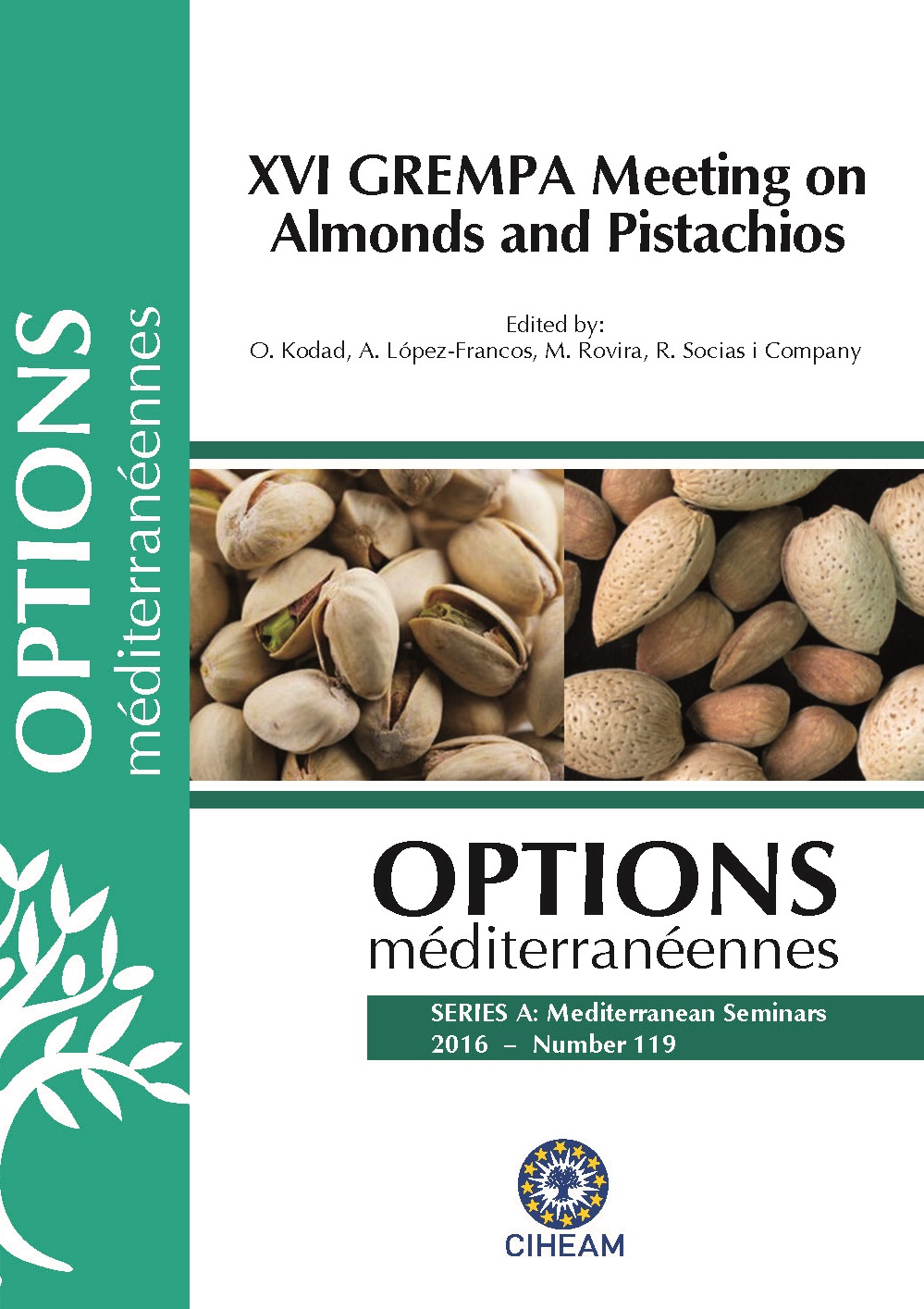| Article précédent | p. 167-171 | Article suivant |
Effectiveness of histological techniques for early identification of scion rootstock incompatibility
Traditionally almond was cultivated in Tunisia extensively under rainfed conditions with local almond seedlings as rootstock. The new tendency for modernization of almond orchards has implemented the use of some non native cultivars that are compatible with the existing rootstocks. In order to evaluate the behaviour of some local cultivars for high density orchard some trials were established using the cultivars ‘Achaak’ and ‘Porto’ with ‘GF-677’ and ‘Garnem’ as rootstocks. Early observations revealed a plausible incompatibility of the cultivar ‘Achaak’ with ‘Garnem’. In order to contribute to the understanding of this phenomenon and to detect other cases of scion-rootstocks incompatibility histological techniques were used as an early detection practice. Preliminary results for the combination ‘Achaak’/’Garnem’ showed some discontinuity of cells in the intermediate zone between scion and rootstocks in addition to an accumulation of black points of starch. Moreover, observations in field showed low circumferences values and weak growth of both parts. Our work reveals for the first time this scion-rootstock incompatibility and underlines the necessity of biochemical tools for a better understanding of this phenomenon.
Traditionnellement, l’amandier a été conduit en Tunisie en extensif avec les semis d’amande amer comme porte-greffes. La nouvelle tendance vers la modernisation des vergers d’amandier a entrainé l’utilisation de variétés introduites avec des porte-greffes bien adaptés à ce système de conduite. Dans le but d’étudier le comportement de quelques variétés locales d’amandier conduites en vergers à haute densité un essai a été réalisé pour la variété ‘Achaak’ greffée sur les deux porte-greffes ‘GF-677’ et ‘Garnem’. Les premières observations ont montré l’existence de quelques symptômes d’incompatibilité avec ce dernier. Dans le but d’approfondir nos connaissances sur le sujet on s’est intéressé à l’application de quelques techniques histologiques pour une éventuelle détection précoce de cas semblables d’incompatibilité. Les premiers résultats ont montré chez la combinaison ‘Achaak’/’Garnem’ une discontinuité au niveau des cellules cambiales existantes dans la zone d’interface et une accumulation de polyphenols. Ces résultats viennent appuyer des observations sur terrain relatives à un rétrécissement de la circonférence des individus étudiés de part et d’autre du point de greffe et de confirmer l’incompatibilité de la variété ‘Achaak’ avec le porte-greffe ‘Garnem’. Finalement ce travail souligne l’efficacité des techniques histologiques pour une détection précoce et approuve l’apport de l’outil biochimique.
- [ Afficher ]
- [ Télécharger ]
- [ Exporter la citation ]
Vous pouvez télécharger la citation au format :
- [ Imprimer ]
-
Mots-clés
INTENSIFICATIONCiter cet article
Ksia E., Gouta H., Aïachi M. Effectiveness of histological techniques for early identification of scion rootstock incompatibility. In : Kodad O. (ed.), López-Francos A. (ed.), Rovira M. (ed.), Socias i Company R. (ed.). XVI GREMPA Meeting on Almonds and Pistachios. Zaragoza : CIHEAM, 2016. p. 167-171. (Options Méditerranéennes : Série A. Séminaires Méditerranéens; n. 119). 16. Meeting of GREMPA (Groupe de Recherches Méditerranéennes pour l\'Amandier et Pistachier / Mediterranean Research Group for Almond and Pistachio), 2015/05/12-14, Meknes (Morocco) . http://om.ciheam.org/om/pdf/a119/00007385.pdf



